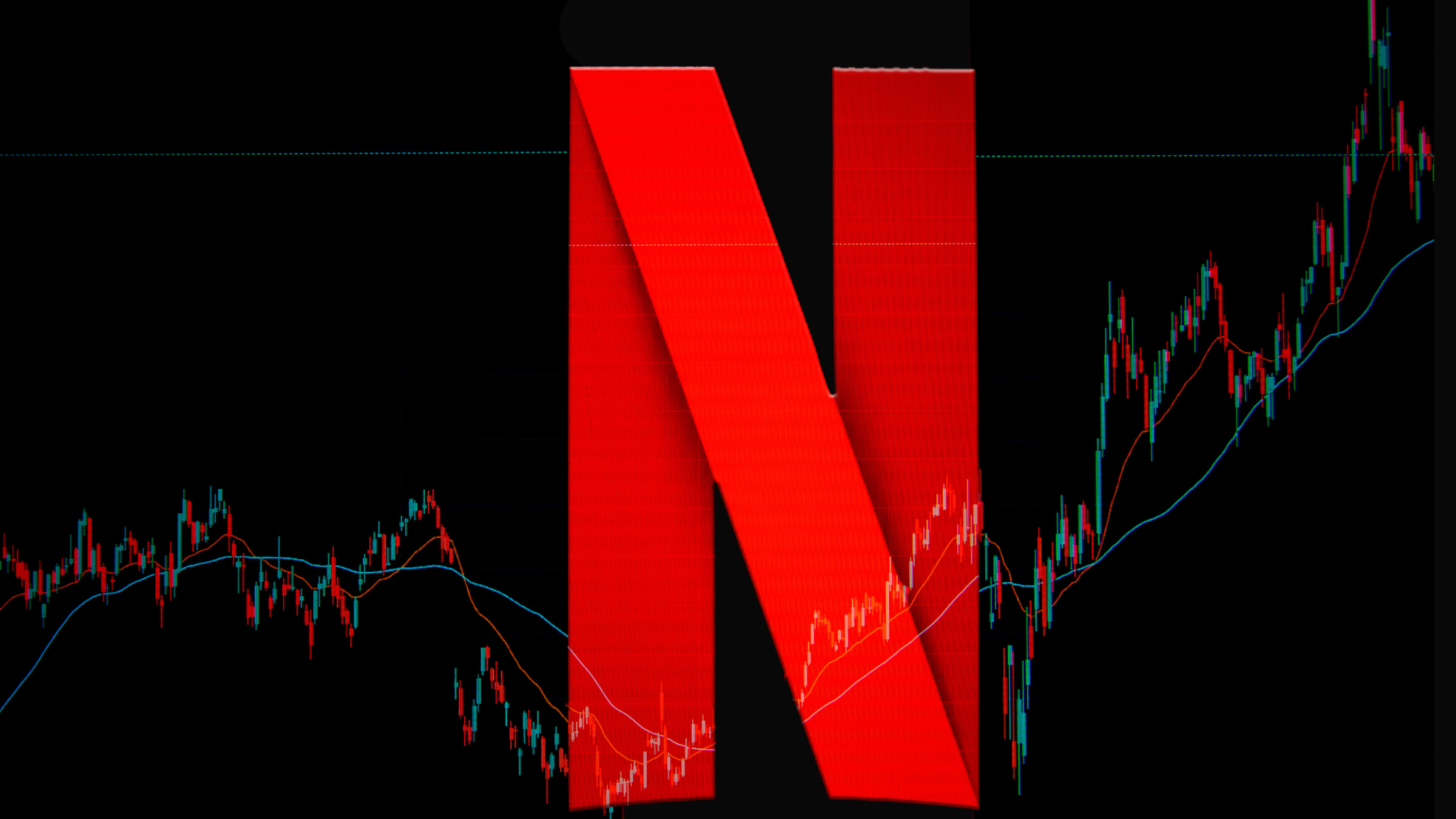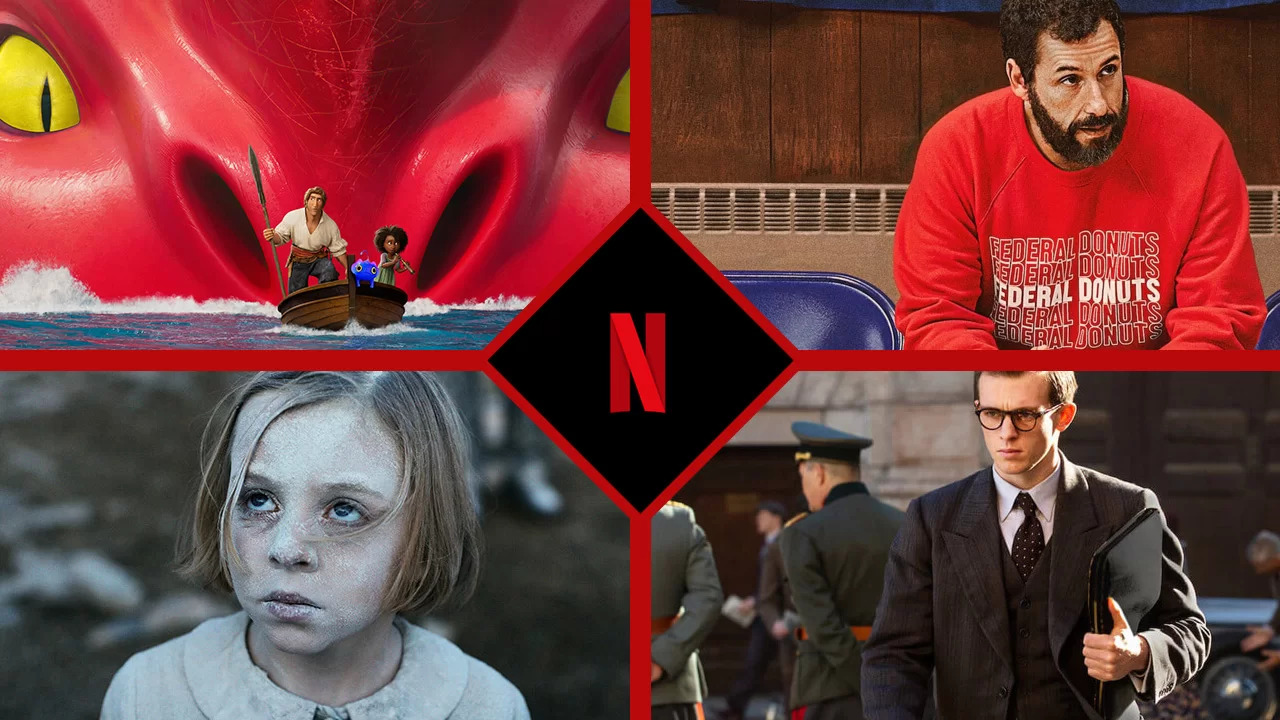Introduction
Netflix, once hailed as the king of streaming platforms, seems to have fallen from grace in recent years. Subscribers have noticed a decline in the quality and variety of content available, leading many to wonder what has caused this unfortunate downturn. With new competitors entering the market and increasing pressure to deliver fresh and innovative content, Netflix has struggled to keep up.
One of the main reasons for Netflix’s decline is the lack of originality in its programming. In its early days, Netflix gained popularity for its groundbreaking original series like “House of Cards” and “Orange is the New Black.” However, in recent years, there seems to be a saturation of similar shows that lack the same freshness and creativity that originally drew viewers in. This leads to a feeling of repetitiveness and a lack of excitement for new releases.
Another contributing factor is the overreliance on its recommendation algorithm. While the algorithm was initially praised for its accuracy in predicting user preferences, it has become a double-edged sword. Netflix seems to be too reliant on it, leading to a homogenization of content. It often prioritizes popular genres and safe options, neglecting niche or innovative films and series that may have limited appeal but can bring a unique viewing experience to a smaller audience.
As Netflix has grown and expanded its library, critics argue that there has been a noticeable decrease in the overall quality of the content. This can be attributed to the pressure to produce a high volume of shows and movies, often resulting in rushed and underdeveloped productions. With limited time for quality control, the overall caliber and attention to detail have suffered, leading to a lackluster viewing experience for subscribers.
Moreover, there seems to be a push for quantity over quality in Netflix’s content strategy. The platform aims to release a staggering number of titles each month, with many films and series getting lost within the vast library. This flood of content makes it difficult for viewers to discover hidden gems and forces creators to compete for attention, resulting in compromises in terms of storytelling and production value.
Lack of Originality
One of the major criticisms of Netflix in recent years has been its lack of originality in programming. While the streaming giant was once known for producing groundbreaking and innovative content, it now seems to be stuck in a cycle of formulaic and predictable shows and movies.
When Netflix first ventured into original programming, it took risks and produced series like “House of Cards” and “Orange is the New Black,” which captivated audiences with their fresh and unconventional narratives. These shows broke new ground and set a high standard for Netflix’s original content. However, as time went on, the streaming platform seemed to play it safe by relying on tried-and-tested formulas.
This lack of originality is evident not only in the types of stories being told but also in the genres that dominate Netflix’s content library. It often feels like there is an overabundance of crime dramas, supernatural thrillers, and romantic comedies, while other genres are left underrepresented. While these genres have their appeal, the lack of variety can leave viewers longing for more diverse and unique storytelling.
Part of the problem may be attributed to the success of certain shows or movies on the platform. When Netflix finds a hit, it tends to lean heavily into similar content, hoping to replicate the success. This results in a flood of shows and movies that feel strikingly similar, lacking the originality and freshness that drew audiences to Netflix in the first place.
Furthermore, Netflix’s original programming is not immune to clichés and tired tropes. Many of the shows and movies feel formulaic, following predictable plotlines and character arcs. This can make the viewing experience feel dull and uninspired, especially for those seeking truly innovative and boundary-pushing content.
While Netflix has made efforts to diversify its content offerings with international productions and collaborations with acclaimed directors and writers, the overall lack of originality remains a recurring issue. The audience wants to be surprised, challenged, and entertained by fresh and unconventional storytelling, and it is crucial for Netflix to refocus on nurturing originality and embracing risk-taking in its programming decisions.
Overreliance on Algorithm
Another significant factor contributing to the decline of Netflix is its overreliance on its recommendation algorithm. While the algorithm initially garnered praise for its ability to personalize recommendations based on user preferences, it has now become a source of frustration for many subscribers.
Netflix’s recommendation algorithm is designed to analyze a viewer’s watch history, ratings, and preferences to suggest new shows and movies that align with their interests. The intention behind this algorithm is to make it easier for users to discover content that they might enjoy. However, the algorithm often falls into a cycle of suggesting similar content, leading to a lack of variety and exploration.
As viewers use Netflix and interact with its content, the algorithm assigns them to specific genres or categories based on their previous viewing habits. While this may seem like a helpful feature, it can also trap users in an echo chamber of content that caters to their specific preferences. This can limit the serendipitous discovery of new and diverse shows and hinder the exploration of different genres and styles.
Another issue with Netflix’s algorithm is its overemphasis on popularity and mainstream content. The algorithm tends to prioritize shows and movies that have gained widespread popularity or have garnered high ratings. While this may be appealing to some viewers, it comes at the cost of hiding lesser-known or niche gems that might have significant appeal to a smaller audience.
The overreliance on the algorithm also leads to a lack of diversity in the recommendations. Users often find themselves stuck in a loop, seeing the same types of content repeatedly suggested to them. This can be frustrating for viewers who are seeking unique and varied experiences, as they miss out on discovering lesser-known, but potentially excellent, shows and movies.
Moreover, the algorithm’s ability to predict user preferences can sometimes lead to a lack of unexpected surprises. Netflix’s original aim was to disrupt traditional television by offering a wide range of content that catered to diverse tastes. However, with the algorithm narrowing down choices based on personal preferences, viewers may miss out on the joy of stumbling upon something entirely new and different.
While personalization is an important aspect of the streaming experience, Netflix should focus on striking a balance between personalized recommendations and the serendipity of discovery. By reducing overreliance on the algorithm and incorporating more diverse and unique content into its recommendations, the platform can reignite the excitement of exploring its vast library and provide a more enriching viewing experience for its subscribers.
Decrease in Quality Content
One of the most noticeable aspects of Netflix’s decline has been the decrease in the overall quality of its content. While the streaming platform was once renowned for its high-caliber original series and films, there has been a noticeable dip in the quality of the content being produced in recent years.
One factor contributing to this decrease in quality is the pressure to produce a high volume of content. As Netflix has expanded its library and faced growing competition from other streaming platforms, there has been a push to release more shows and movies to keep subscribers engaged. However, this emphasis on quantity often comes at the expense of quality, with rushed production schedules and limited time for thorough script development and production value.
This rushed approach leads to underdeveloped storylines, weak character development, and overall lackluster execution. Viewers are left with shows and movies that feel rushed and haphazardly put together, lacking the depth and coherence that make for a compelling viewing experience. As a result, subscribers may find themselves disappointed by the lack of substance or emotional connection to the content they consume on Netflix.
Furthermore, while Netflix has invested in big-budget productions and collaborations with renowned filmmakers and actors, there is often a sense that these high-profile projects prioritize star power over storytelling. While recognizable names may draw audiences initially, the lack of a strong narrative foundation can lead to a letdown, leaving viewers longing for more substance in the content they consume.
Another aspect that impacts the quality of Netflix’s content is the focus on appealing to a broad audience. While accessibility is important, catering only to the masses can sometimes result in watered-down stories and safe choices that lack depth and originality. This can make the content feel generic and lacking in artistic vision, leaving viewers craving more thought-provoking and boundary-pushing narratives.
As competition in the streaming industry increases, there is a risk of Netflix focusing more on quantity and marketability rather than nurturing and investing in quality storytelling. To regain its position as a leader in the streaming market, Netflix must prioritize creative excellence, encourage risk-taking, and dedicate resources to developing content of the highest caliber.
Push for Quantity over Quality
An alarming trend observed in Netflix’s recent years is the prioritization of quantity over quality in its content production. The streaming giant has been under pressure to continually release a high volume of shows and movies to keep subscribers engaged and attract new viewers. However, this push for quantity often comes at the expense of the overall quality of the content offered.
One of the consequences of this emphasis on quantity is rushed production schedules and limited time for thorough script development and pre-production. As a result, shows and movies may suffer from underdeveloped storylines, weak character arcs, and lack of attention to detail. When content is rushed, it can result in a subpar viewing experience, leaving viewers feeling unsatisfied and disappointed.
In the pursuit of quantity, Netflix may also compromise on the selection of scripts and concepts. Instead of carefully curating a diverse and innovative content library, there is a risk of greenlighting projects solely based on marketability and mass appeal. This can lead to an inundation of formulaic and predictable content that lacks originality and fails to captivate viewers looking for unique and thought-provoking storytelling.
Another consequence of prioritizing quantity over quality is the excessive focus on staying relevant and constantly releasing new content. While this approach may generate initial buzz around a show or movie, it can often result in a lack of depth and substance. By spreading resources thin across a multitude of projects, Netflix runs the risk of diluting the overall quality of its content.
Additionally, the push for quantity can result in overcrowding the platform’s library with content that goes unnoticed or gets lost among the vast selection. With so many shows and movies available, it becomes challenging for viewers to discover hidden gems or lesser-known titles. This overabundance of content not only makes it difficult to navigate but also decreases the chances of quality productions gaining the recognition they deserve.
Although offering a wide variety of options is important, Netflix should strive to strike a balance between quantity and quality. By focusing on nurturing originality, investing in thorough script development, and allowing sufficient time for production, the streaming giant can deliver a more curated and exceptional viewing experience. Quality should always be a priority, ensuring that each release contributes to the platform’s reputation for providing outstanding content.
Lack of Transparency with Ratings
One area where Netflix has faced criticism is its lack of transparency when it comes to ratings and viewer metrics. Unlike traditional television networks or movie studios, Netflix does not publicly release comprehensive data on how many people are watching its shows and movies. This lack of transparency has raised concerns among viewers and industry professionals alike, leading to questions about the actual popularity and success of Netflix’s content.
Traditionally, television networks and movie studios rely on ratings to gauge the performance of their shows and movies. These ratings provide valuable insights into viewership numbers and help determine the success or failure of a particular production. However, Netflix has taken a different approach by closely guarding its viewer data and keeping it confidential.
While there may be strategic reasons behind this decision, the lack of transparency can create skepticism among viewers and industry professionals. Without access to accurate and verifiable ratings data, it becomes challenging to assess the actual popularity and cultural impact of Netflix’s shows and movies. This can leave audiences wondering if a particular series or film is truly successful or if it is being hyped up without substantial viewership numbers.
Furthermore, the absence of detailed ratings and viewership data can have an impact on the decision-making process for both viewers and content creators. Viewers may find it difficult to gauge whether a show or movie is worth investing their time in, as they lack visibility into its reception and overall popularity. On the other hand, content creators may struggle to understand the audience’s preferences and validate the success of their projects without concrete data.
It is worth noting that Netflix has taken steps to provide some visibility into the popularity of its content through mechanisms like “Trending Now” or Top 10 lists. However, these lists are limited in their scope and do not offer the same level of transparency as comprehensive ratings data would.
Transparency in ratings and viewership numbers would not only benefit viewers but also content creators and the overall industry. By sharing more detailed information about the performance of its shows and movies, Netflix can foster trust and confidence among its viewers and partners. This level of transparency would enable viewers to make more informed choices and give content creators valuable insights into audience preferences, ultimately leading to a more robust and thriving ecosystem.
Increase in Subscription Prices
One factor that has caused frustration among Netflix subscribers is the steady increase in subscription prices over the years. As the leading streaming platform, Netflix has raised its prices multiple times, citing the need to invest in content production and meet rising operating costs. However, these price hikes have left many subscribers questioning the value they receive in return for their investment.
The increase in subscription prices can be attributed to several factors. Firstly, the streaming industry has become highly competitive, with new players entering the market and vying for subscribers’ attention. As Netflix faces increased competition, it needs to allocate more resources towards content creation and acquisition to maintain its position as a leading provider. These costs are often passed on to the subscribers through higher subscription fees.
Secondly, Netflix has been investing heavily in original programming, which comes with significant production and licensing costs. Producing high-quality shows and movies, hiring top talent, and securing licensing rights for popular content all contribute to the overall expenses incurred by Netflix. To cover these costs and continue producing original content, the company must increase subscription prices to generate the necessary revenue.
Moreover, the increase in subscription prices can also be seen as a reflection of the continually evolving nature of the streaming industry. As technology advances and consumer demand for high-definition and 4K content grows, streaming platforms must invest in infrastructure upgrades and bandwidth to deliver a seamless viewing experience. These technical advancements come at a cost, and ultimately, subscribers end up bearing a portion of these expenses through higher subscription fees.
While it is understandable that Netflix needs to generate revenue to sustain its operations and provide quality content, the frequent and substantial price increases have sparked concerns among subscribers. Many users have expressed frustration at the lack of perceived value for their money, particularly when faced with a library that lacks the originality, variety, and quality they expect.
Some subscribers have even opted to cancel their subscriptions or switch to lower-cost alternatives as a result of the price increases. This highlights the importance for Netflix to strike a balance between generating revenue and ensuring that subscribers feel they are getting their money’s worth. It is crucial for the company to continually assess its pricing structure and take into account the feedback and expectations of its subscribers in order to maintain a loyal customer base.
Lack of Variety in Library
A common complaint among Netflix subscribers is the lack of variety in the platform’s content library. While Netflix offers a vast array of shows and movies, many viewers have expressed frustration at the limited selection and repetitive nature of the available content.
One aspect contributing to the lack of variety is the overemphasis on popular genres and mainstream content. Netflix, like many other streaming platforms, tends to focus on producing and promoting content that will appeal to a broad audience. While this approach ensures a certain level of mass appeal, it often leaves other genres and niche interests underrepresented.
Additionally, the algorithm that Netflix uses to recommend content may unintentionally contribute to the lack of variety. The algorithm analyzes a viewer’s watch history and preferences, then suggests similar content based on those preferences. While this can be helpful in finding new shows and movies that align with a viewer’s interests, it can also create an echo chamber of content, perpetuating a cycle of sameness and limiting exposure to different genres and styles.
Furthermore, the focus on content production has led to an influx of original series and movies, but many subscribers feel that these offerings lack diversity and originality. The platform tends to prioritize quantity over diversity, resulting in a library that feels saturated with similar content rather than offering a wide range of unique and distinct shows and movies.
In recent years, Netflix has made efforts to diversify its content by investing in international productions and collaborating with creators from different backgrounds. While these initiatives are commendable, there is still a long way to go in terms of providing a truly diverse and inclusive content library that caters to a global audience.
Additionally, the lack of variety extends beyond genre and cultural representation to include different types of content. While Netflix is primarily known for its scripted series and movies, there is a dearth of other formats such as documentaries, reality shows, and live events. Expanding the range of content formats would not only provide more options for viewers but also attract a wider audience with varying interests.
To address the issue of lack of variety, Netflix should prioritize diversifying its content library by actively seeking out and acquiring shows and movies from underrepresented genres, niche markets, and diverse creators. Incorporating a wider range of content will ensure that there is something for everyone, making the platform more appealing to a broader audience and cementing its position as a leading streaming platform.
Limited Geographic Availability
One of the challenges that Netflix faces is limited geographic availability of its content. Despite being a global streaming platform, the content library differs across countries, with certain shows and movies only accessible in specific regions. This lack of uniformity in content availability has been a source of frustration for subscribers around the world.
Geographical restrictions on content stem from licensing agreements and distribution rights. Different regions have different regulations and licensing agreements that restrict the availability of certain content. This means that viewers in one country may have access to a particular show or movie, while those in another country are unable to stream it. This discrepancy creates an inequity in access to content and can leave subscribers feeling left out or underserved.
The limited geographic availability of content has led to a phenomenon commonly known as “geo-blocking.” Certain shows or movies may only be available in specific regions, leading some subscribers to resort to using virtual private networks (VPNs) or other tools to bypass these restrictions. While these workarounds offer a way for viewers to access content from different regions, they are not supported or endorsed by Netflix, and there is always a risk of account suspension or loss of access to the platform.
The geographically limited availability also impacts the overall diversity and variety of content offered on Netflix. Different regions have unique cultures, languages, and storytelling traditions. By limiting the availability of content based on geographic regions, Netflix misses the opportunity to showcase a more diverse range of shows and movies from different parts of the world.
While Netflix has made efforts to produce region-specific content, such as local original shows or movies, it is still important to address the broader issue of limited geographic availability. One possible solution is to renegotiate licensing agreements and distribution rights to allow for a more consistent and uniform content library across countries. This would ensure that subscribers from different regions have equal access to the diverse range of content available on the platform.
Moreover, expanding the global availability of content would not only benefit subscribers but also contribute to the growth and success of Netflix itself. By catering to a broader international audience, the platform can tap into new markets and increase its subscriber base, ultimately making it more economically viable and sustainable.
As Netflix continues to expand its global reach, it is crucial for the platform to address the issue of limited geographic availability. By working towards a more equitable and consistent content library, Netflix can provide a more inclusive and satisfying streaming experience for subscribers around the world.
Conclusion
Netflix, once hailed as a groundbreaking streaming platform, has faced a series of challenges that have affected the quality and variety of its content. The lack of originality, overreliance on algorithms, decrease in quality content, push for quantity over quality, lack of transparency with ratings, increase in subscription prices, limited geographic availability, and lack of variety in the library have all contributed to the concerns raised by subscribers.
To address these issues, Netflix must focus on rekindling its commitment to originality and risk-taking, nurturing creativity, and investing in high-quality storytelling. The platform should strike a better balance between personalized recommendations and the serendipity of discovery, ensuring that viewers are exposed to diverse and unique content.
Transparency in ratings and viewership numbers would build trust and confidence among subscribers and content creators alike. By sharing comprehensive data on the popularity of its shows and movies, Netflix can validate the success of its content and better understand viewers’ preferences.
Furthermore, Netflix needs to carefully evaluate its pricing structure to ensure that subscribers feel they are receiving adequate value for their investment. Striking a balance between generating revenue and providing a satisfying viewing experience is crucial to maintaining a loyal subscriber base.
Expanding the geographic availability of content and diversifying the library would also be beneficial. By negotiating licensing agreements and distribution rights, Netflix can ensure that subscribers from different regions have equal access to a diverse range of content that reflects varied cultures and storytelling traditions.
In conclusion, Netflix must listen to the concerns of its subscribers and adapt to the evolving preferences and expectations of viewers in order to remain a leading player in the streaming industry. By prioritizing originality, quality, transparency, and diversity, Netflix can regain its position as a top streaming platform and continue to captivate audiences worldwide.

























